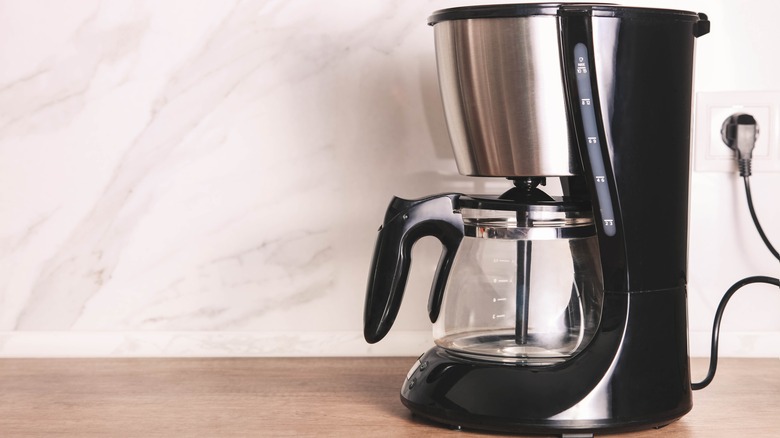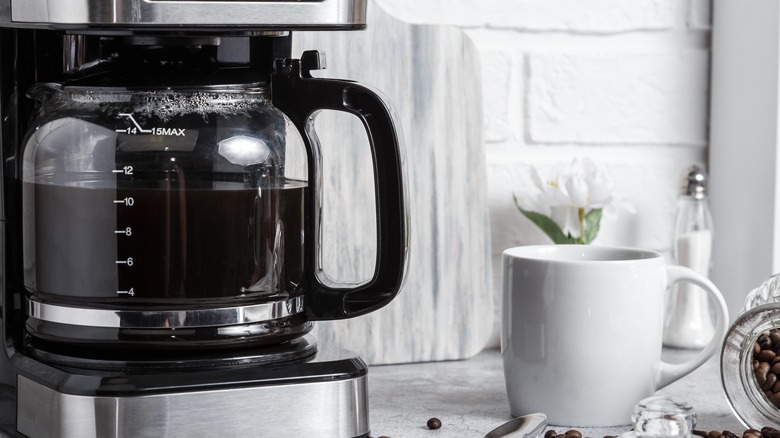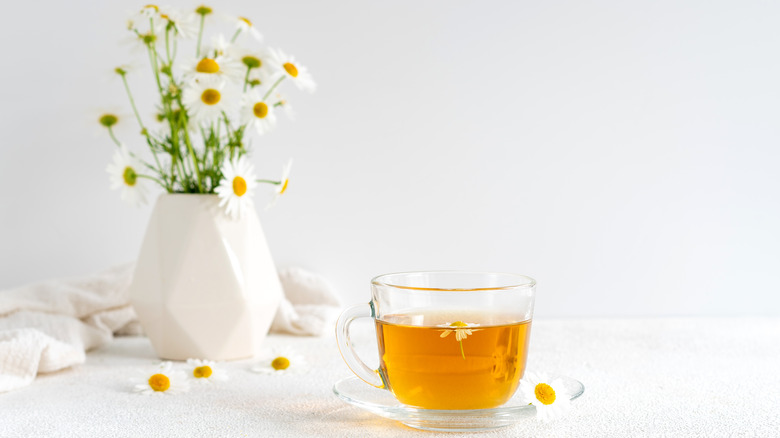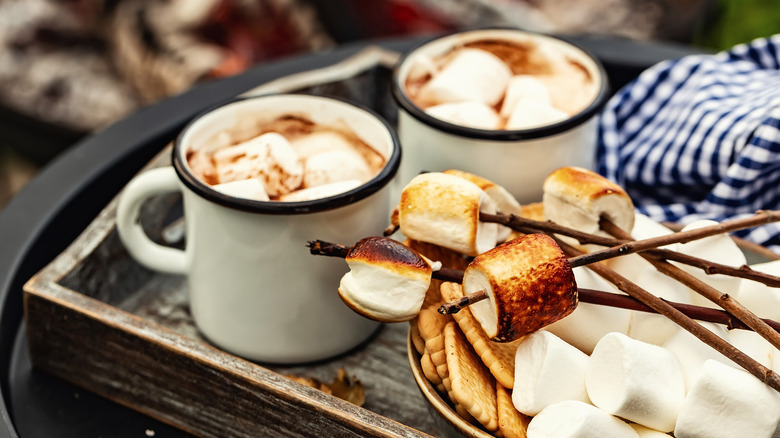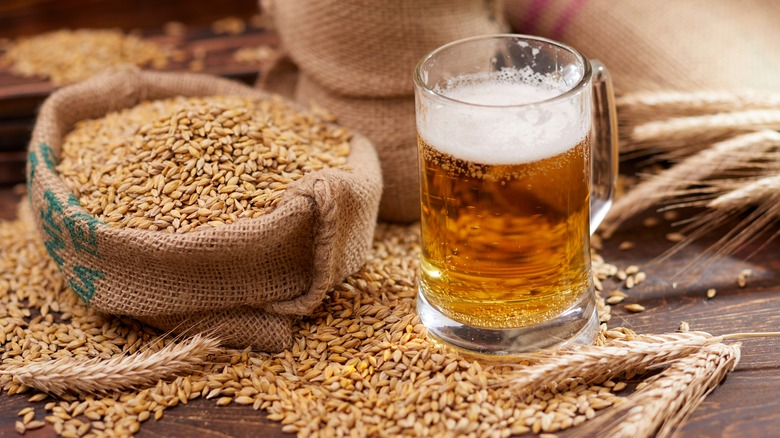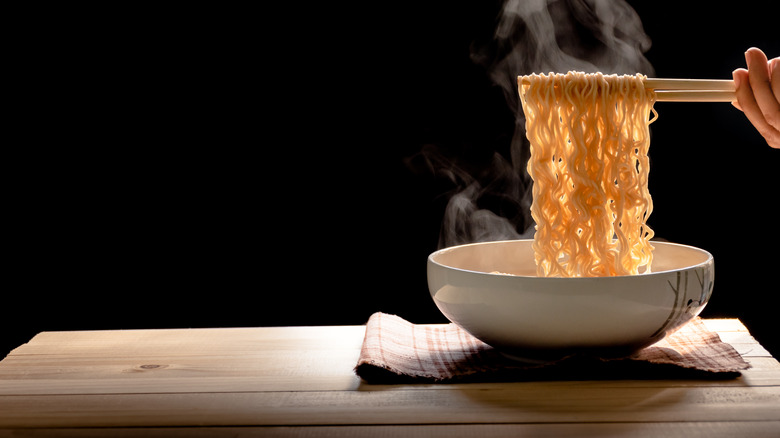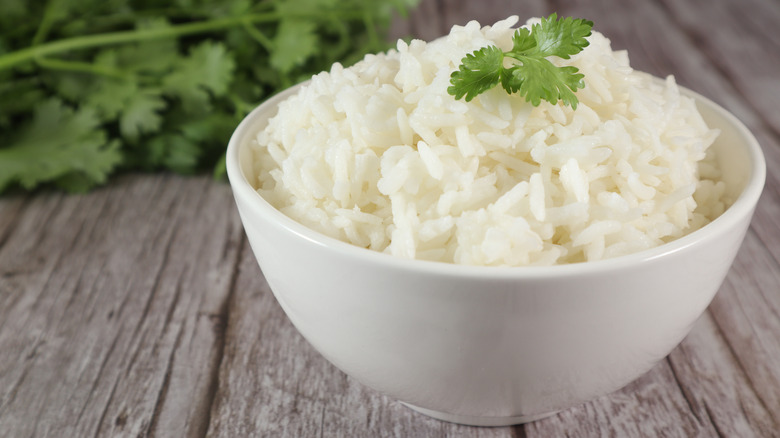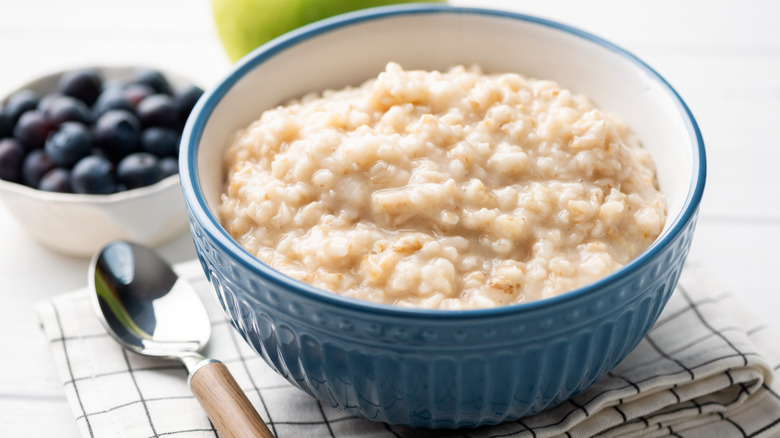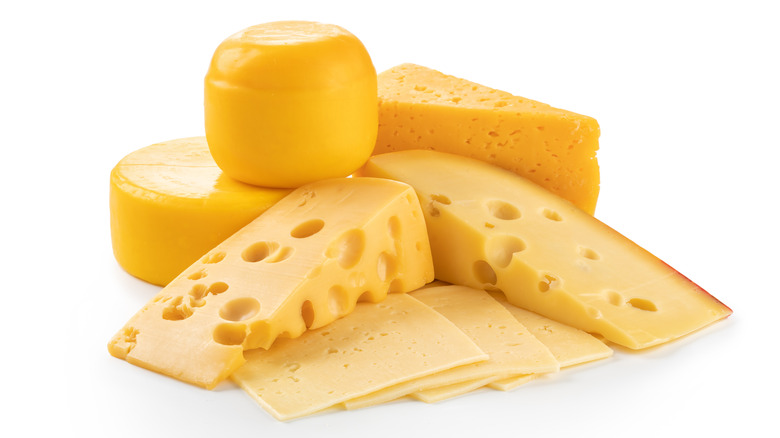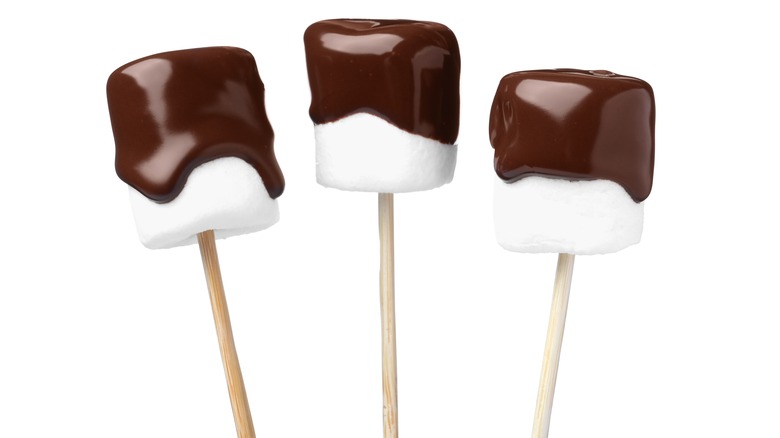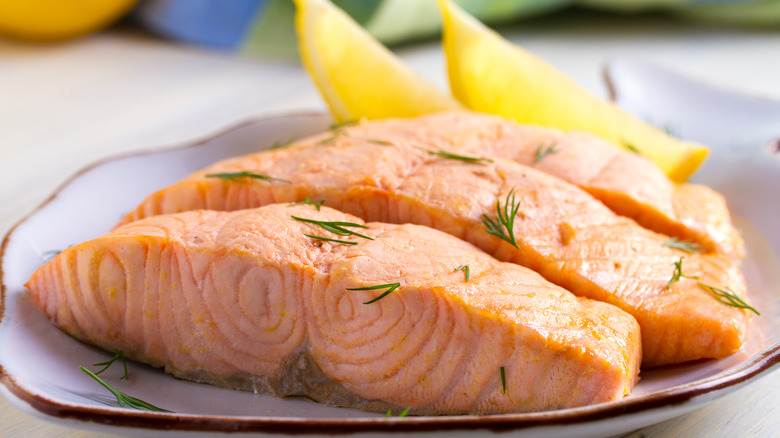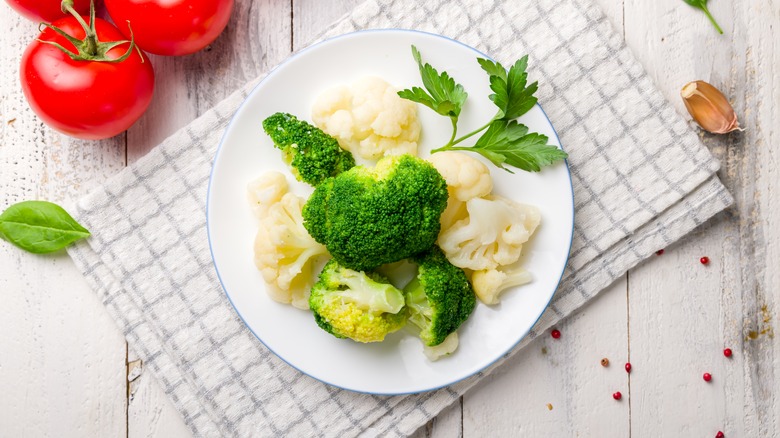The 11 Absolute Best Uses For Your Coffee Maker
If you're like most people, you probably haven't given your countertop coffee maker a second thought beyond whether to use it with fresh-ground or pre-ground beans. It's simply part of your morning routine that you replace every six or seven years. However, a coffee maker is capable of doing much more than extracting flavor from roasted coffee beans.
Do a bit of research, and you'll find that it's possible to use a coffee maker for anything from cooking a pizza to making whipped cream. However, the results of some of those uses are a bit underwhelming. Do you really want to go through the trouble of making a pizza on your coffee maker's hot plate, when there's likely a frozen pizza or fresh slice readily available? So if you're looking to avoid the gimmicks and focus on the absolute uses for your coffee maker, we got you. Ideally, you should be using one of the better coffee makers that has a temperature adjustment feature.
Yes, you can make coffee
This may be going out on a limb, but one of the best uses for your coffee maker is — and we cannot stress this enough — making coffee. What's that you say? Do you already know this? Well, at the risk of sounding a bit blog-y, it's quite possible that you've been doing it wrong.
First of all, you should start with whole coffee beans that you grind yourself. When coffee beans are ground, the grounds begin to release fragrant gases, and as more time passes, the more these gases are allowed to escape, resulting in blander and blander coffee. According to CNET, you should opt for an adjustable burr grinder over a blade grinder because a burr grinder yields uniform grain sizes, which makes it easier to get repeatable results.
You should also use the ideal coffee-to-water ratio: 2 ounces of water to 45 ounces of water, notes the Specialty Coffee Association of America. If you have a temperature setting on your coffee maker, the association also recommends using a water temperature between 197 F and 205 F.
You can make tea
Making tea with a coffee maker isn't too far of a conceptual leap. Because you can make a large batch and keep it warm with a hot plate, this approach to making tea can also be a preferred option.
The first thing you absolutely must do before using your coffee maker for tea is to ensure your appliance is free of coffee residue. If you don't clean your machine properly, your tea will take on the acidic flavors of coffee residue. Teabloom recommends running a ½ cup of white vinegar followed by a full pot of water through your machine before switching it over to tea.
If you're one of the 42% of people who make tea using tea bags, you should check your package of tea bags to determine the amount of water to use; typically 6-to-8 ounces per bag. Then, because your tea bags won't be steeping in the carafe, cut the amount of water in half to ensure your tea is strong enough, according to Teabloom.
If you only have loose-leaf tea, you can still use the coffee maker's hot water and hot plate to brew tea. After it's done brewing, you could pour your brewed tea through a coffee filter or simply avoid drinking the leaves.
Make hot chocolate in bulk
We Americans tend to consider hot chocolate as more of a children's drink, but for thousands of years, people in other cultures have considered hot chocolate to be part of their daily ritual (via CBS News).
Using a coffee maker is a great way to make hot chocolate in bulk and keep it warm for a group of people. If you're using a powdered hot chocolate mix, simply add the mix to the carafe and read the directions on the package to determine how much water to add to the reservoir. After the brewing cycle has completed, use a long spoon to stir your hot chocolate and ensure all the powder has been dissolved (via Art of Barista).
While powdered mix can get the job done, the secret to making the best hot chocolate is to use good quality dark chocolate. Chocolate melts between 63 F and 97 F, according to The Spinnaker Chocolate Blog, and typical coffee maker carafes can reach temperatures of around 195 F, notes Consumer Reports. Therefore, you should be able to add dark chocolate and milk to the carafe, switch on your coffee maker, and occasionally stir until the chocolate and milk have combined. We recommend using a ratio of about 3 ounces of chocolate to every 8 ounces of milk.
You can actually brew beer, too
Coffee makers are made to brew, and one thing they are capable of brewing is beer, according to KegWorks. To brew beer correctly, you must be able to keep the temperature of your brew within a certain range. If it's too cold, you won't extract enough sugar from the grains. If it's too hot, you'll extract undesirable off-flavors from your grains. Happily, most coffee makers are designed to maintain the ideal temperature for brewing beer.
To make beer with your coffee maker, suggests KegWorks, you should start by ensuring your machine has been cleaned thoroughly. Add 1 ¼ cups of cracked malted barley to the carafe and 2 cups of filtered water into the reservoir. Start the brew cycle and allow the grains to steep for an hour. Strain out the grains using a coffee filter and then place the full filter into the filter basket. Pour the strained liquid into the reservoir and start another brew cycle. Brew for another five cycles to fully extract all the sugars from the grains.
KegWorks says you should then remove the liquid "wort," place it into a shallow saucepan along with hop pellets and boil for 30 minutes. After the boil, pour the wort into a canning jar and place the jar in cold water until the temperature reaches 70 F. After adding half a packet of champagne yeast, top with a cheesecloth and place in a cool, dark place for five to seven days. How neat!
Make pasta and instant ramen
One of the most appealing aspects of a coffee maker, concerning its cooking potential, is its ability to maintain desirable temperatures just below the boiling point of water. Although we tend to cook pasta in boiling water, the lower brewing temperature of a coffee maker is capable of making great pasta and instant ramen. According to Consumer Reports, the carafe of a typical coffee maker reaches temperatures of around 195 F.
To make pasta in a coffee maker, simply add your dried noodles to the carafe and fill the reservoir with the maximum amount of water it is designed to hold. Run the brew cycle and wait about 10 minutes, or until your noodles have reached the desired texture. Using the lid on your carafe, carefully pour out the hot water to leave the cooked noodles behind. Making instant ramen is a similar process, except you should add your flavoring to the carafe before brewing and use the amount of water listed on the package.
When it comes to cooking time, you may want to skip directions on the package. Some packages say to boil ramen for four to five minutes, but you should really be boiling ramen noodles for about two minutes. Since coffee makers reach temperatures lower than boiling, you may want to go a bit longer than two minutes. The key is to regularly check the noodles and stop cooking just as they reach the desired level of doneness.
A healthier way to make rice
Rice is a significant source of toxic inorganic arsenic, and while arsenic-related health risks of eating rice are fairly minimal, your coffee maker offers a way to cook rice that is much safer than boiling.
Arsenic is a naturally occurring toxin found in groundwater and soil. In the past, some pesticides also included arsenic, and although those chemicals are mostly banned decades ago, they can still be found in agricultural soils. Rice crops are known for taking up arsenic and food products made with rice are often found to contain significant levels of arsenic (via The Washington Post).
Boiling water can remove arsenic from rice, but if the rice continues to sit in that water, arsenic can be reabsorbed. When rice is cooked in a coffee maker using a coffee filter, hot water passing over the rice helps to remove arsenic as the rice is cooked. According to research published in the academic journal PLOS One, approximately 4 pints of water and a coffee maker can cook 500 grams of rice and remove arsenic in the process.
Make next-level oatmeal
Oatmeal is another one of those foods that you can easily make without a coffee maker. However, there are advantages to doing so. In fact, General Mills has been marketing instant oatmeal cups designed for use in a Keurig machine since 2014 (via The Wall Street Journal). A spokesperson for the company pointed out that making oatmeal this way means children wouldn't have to handle hot water. Additionally, using a coffee pot can help you avoid over-stirring, which can make oatmeal chewy.
Enlisting your coffee maker also gives you the opportunity to infuse your oatmeal with extra flavor. In a somewhat dated Food Network clip, Alton Brown recommends putting a flavored tea bag such as orange pekoe into the brew chamber. Brown's hotel-friendly approach to making oatmeal also includes adding a takeout packet of honey, a takeout packet of jam, and a little bit of salt to two packets of plain oatmeal. Based on your desired consistency, Brown also says to use eight to 10 ounces of water.
Make cheese fondue
Cheese fondue is a great addition to any party, especially a cold-weather party, but it can be a bit temperamental. In order to keep it from separating, you shouldn't let cheese fondue get too hot. The melting temperature for cheeses used in fondue is around 150 F. If fondue gets much hotter than this melting point, it will likely break. Because most coffee makers maintain temperatures of around 195 F, notes Consumer Reports, making cheese fondue in a coffee maker means being able to keep it over controlled heat so that it won't solidify.
If you were looking to make cheese fondue with your coffee maker, you may want to consider some cheese fondue recipe tips shared with us by cheese expert Adam Moskowitz. One excellent tip is to consider more than just Swiss cheese for your fondue. Moskowitz recommends asking your local cheesemonger for alternatives. Our cheese expert also recommends going beyond the traditional cognac. In particular, beer and champagne can also make for a great fondue base. Moskowitz recommends picking a dry beverage with robust acidity.
Make chocolate fondue
If you've never made chocolate fondue, you might be surprised by how easy it is. Using a coffee maker for fondue makes the entire process even easier, especially when it comes to keeping your fondue at the ideal temperature.
Using good chocolate is the key to any chocolate fondue recipe. Fondue expert Jennine Bryant recently told us that she uses both milk chocolate and dark chocolate in her chocolate fondue. However, other types of chocolate could be perfect for your next fondue, including white chocolate and mint chocolate.
After chopping up your chocolate, add whipping cream into your carafe and turn on the coffee maker. Once your cream has reached around 110 F, the ideal melting temperature, add your chopped chocolate and stir occasionally to incorporate.
Finally, you should bring out all other foods you intend to dip in your chocolate fondue. If you're not looking to make any extra work for yourself, strawberries, blueberries, marshmallows, and pretzels are all great options. If you don't mind a bit of prep work, sliced pears, bananas, and other fruit are also great dipping options.
You can poach chicken or salmon
While poaching chicken breast or salmon in a coffee maker may sound a bit gimmicky, learning this technique can come in handy if you're living in a dorm, staying in a hotel room, or in any situation where you don't have access to a proper kitchen. To be fair, this is sort of a last resort cooking but, cooking meat with Mr. Coffee as your sous chef is pretty fun.
Start by measuring out approximately 1 centimeter of water in the carafe, and then dumping that water into the reservoir. Next, place your chicken or salmon in the carafe along with a pat or two of butter and a heavy amount of seasoning. If you're cooking chicken breast, use your favorite store-bought spice blend. If you're cooking salmon, you can use soy sauce and classic aromatics like garlic and ginger. Because plain water can draw the flavor out of your protein, putting enough seasoning into the carafe is critical.
Once everything is in the carafe, run the brew cycle. If you're poaching chicken, allow it to cook for 15 minutes on one side and 15 minutes on the other side. If you're poaching salmon, allow it to cook until it's opaque — about seven minutes. Because you've been dealing with raw meat or fish, be sure to clean everything thoroughly afterward.
You can steam veggies
Although it's not as elegant or as efficient as using a steamer basket, you can use the basket at the top of your coffee maker for steaming, according to NPR. If you are going to use your coffee maker for steam cooking, the most practical thing to cook are vegetables that cook relatively fast, like broccoli or cauliflower.
Start by chopping up your vegetables into bite-sized portions. This not only makes them easier to eat, but a larger surface area makes it easier for your coffee maker. Next, add your veggies and any seasoning to a coffee filter and place the filter in the basket. Add the maximum amount of water to the reservoir and run the brew cycle twice using the same water, stirring the vegetables between cycles to ensure even cooking.
The entire process will take longer than doing it over a stove, but it can allow you to multitask on the small countertop device. NPR also notes that you can add couscous to the carafe after the first brew cycle, run the second cycle and allow it to sit for five minutes before it's ready to eat.
